True History of the Kelly Gang recounts the story of the infamous bushranger Ned Kelly and his band of outlaws as they evade authorities in 1870s Australia, directed by Justin Kurzel and based on Peter Carey’s Booker Prize-winning novel of the same name.
Kurzel’s interpretation of the well-told story draws on traditional views of Ned Kelly as a charismatic rebel with a cause but avoids the mythologisation of the national figure, instead shaping his character in the context of an abusive upbringing and a dysfunctional, toxic relationship with his mother. Outtake sat down with the Australian director to discuss his latest film, starring George MacKay, Essie Davis, Nicholas Hoult, Charlie Hunnam and Russell Crowe.
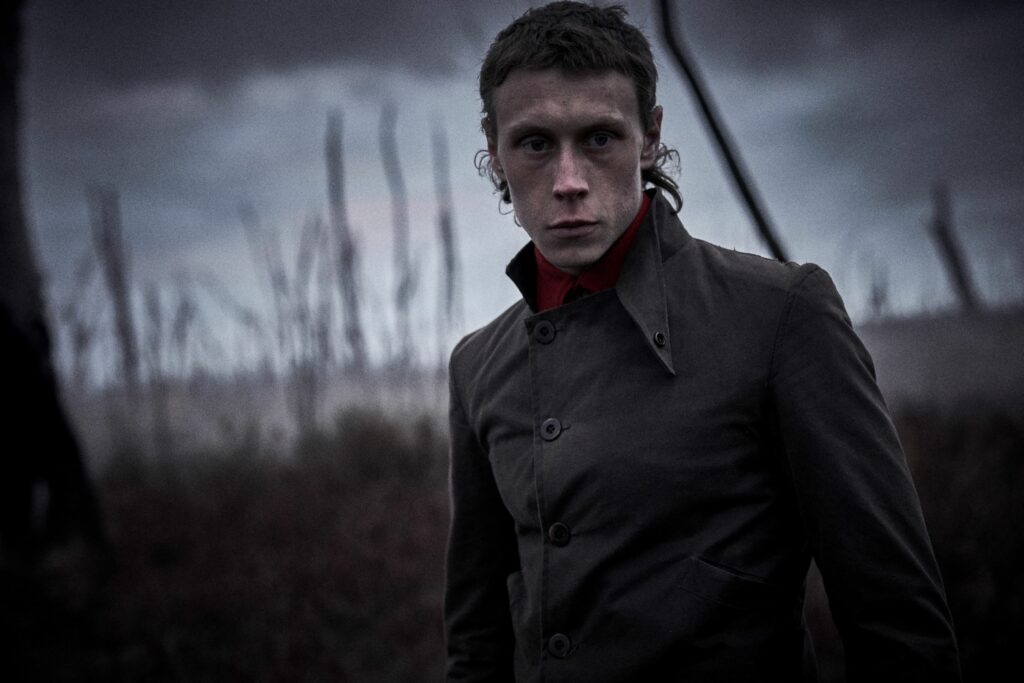
What was it that attracted you to this project? I understand you came across Peter Carey’s novel first.
Justin Kurzel: Yeah, yeah. I always knew about it because it was a really celebrated book in Australia and won the Booker Prize, so there was a kind of halo around it. But it was after Snowtown and the producer had a meeting with me and said, “Look, I’d really like you to do this.” I was pretty scared of it because we’ve had endless films and books written about Ned Kelly. I was also really intrigued as to whether there was a new way into it. And I didn’t do anything with it for six to eight years and made a couple of films in between. Then I was really missing home, so I picked it up again and read it. And there was something in it that I could see that was fresher than anything that had been done before. And that just allowed me to be quite bold in the way I wanted to reinterpret the Kelly story.
And you mentioned that there were a fair number of adaptations already, how did that inform how you approached it?
I watched the very first one, the first feature-length film actually ever made was the live action of the Ned Kelly story (The Story of the Kelly Gang, 1906), and I’d seen Gregor’s one (Gregor Jordan, director of Ned Kelly, 2003), and I’d seen a little bit of the Mick Jagger one (Ned Kelly, 1970)… but Peter’s book was just so different, it was told in the first person, it was fictional, you know, it was sort of saying, “Look, we’re not pretending to be a true history of the guy or a full-on biography, but who knows what the real history of Ned Kelly is?” And actually, this book is about that, it’s about how to protect your own history, because you know it’s going to be changed and manipulated to be whatever someone wants it to be. That interested me a lot.
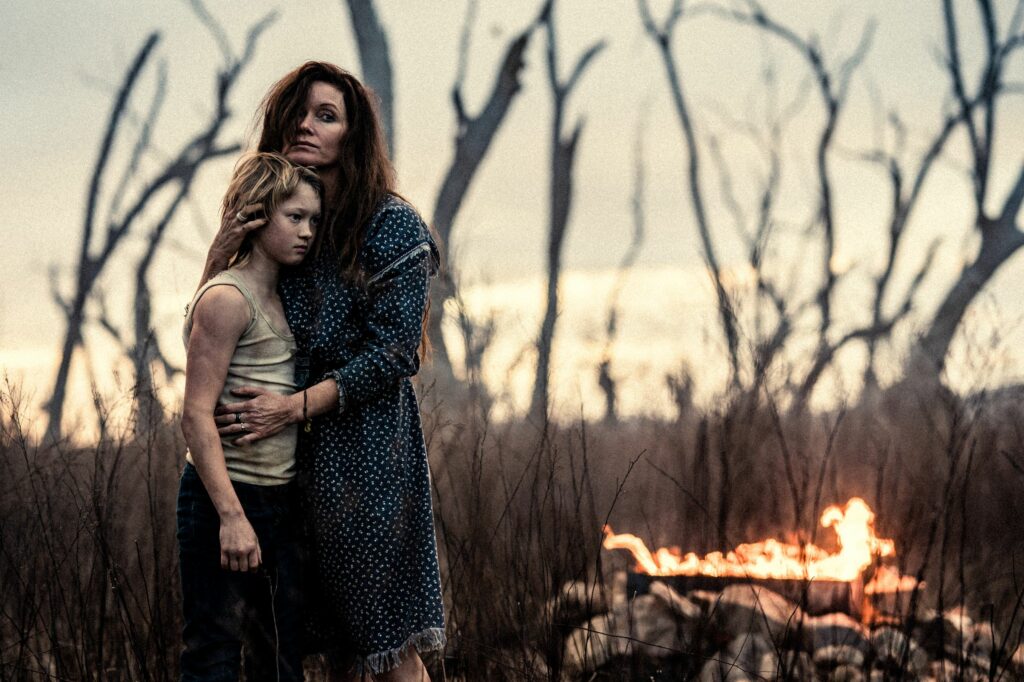
And for British audience who likely won’t know about Ned Kelly, can you explain what the relationship between him, the myth around him and his impact on Australian culture looks like?
Well, there’s an anti-authoritarian kind of history in the DNA of Australia that comes from convict times, and we’ve always been fascinated by those figures in Australian history, those that go against the law and challenge the establishment, because that’s kind of who we are, Australia was made up of those who had been sent here for challenging the establishment. I think he’s revered in Australia, good and bad, because somehow him building this armour, and these iconic shots of him battling the law, robbing banks for the poor, that resonated in this kind of laconic, Australian male legend that for some reason we’ve connected to; but it’s definitely an attitude that’s being challenged now, as to what that means and why that is, how real this idea is and questioning why we put so much emphasis on a 24-year-old, white male bushranger. In terms of our own history, asking why that defines us.
The sense you get from the film is that no one is quite sure where Ned Kelly sits on the hero/villain spectrum. He seems to swing radically between a Robin Hood persona and that of an unhinged criminal.
In the film, it’s about whether you can outrun your destiny and your fate. It’s his mother saying, “you’re a Kelly, you’ve got to become that person and no matter what, you will protect your family.” And there’s an element of him that you can feel throughout the film, where maybe he doesn’t want to be a Kelly, maybe he wants to be something or someone else. The film questions whether you can outrun that, outrun your own destiny and fate. In Australia I think people have a really awkward relationship with him, especially now because he represents just a very, very small slice of our history. So it’s very curious that we keep going back to him when there’s a shitload of history that comes before him that is dark and tragic. So why has he become this kind of icon for white Australian men, why does he represent these particular masculinities that are pretty toxic. Why has he become a symbol of what it is to be an Australian male? The film is prodding and poking around the question of why that is, and definitely trying to be provocative in questioning what some of those symbols mean.
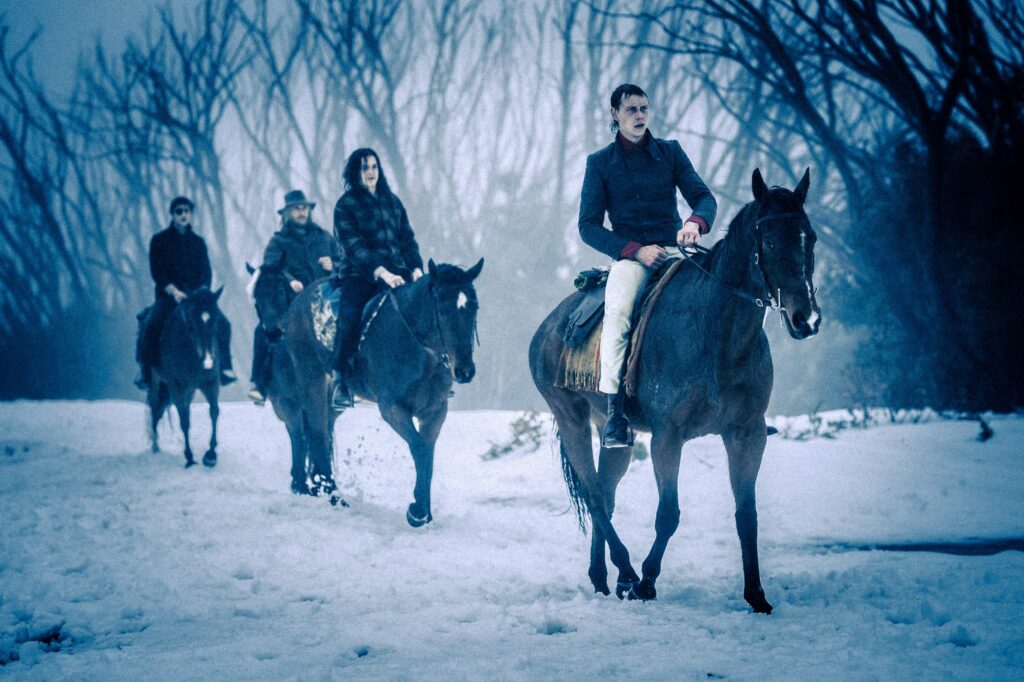
It’s interesting that you say he’s a symbol of masculinity, because one of the prominent and memorable elements of the story is that these men dress up in beautiful, feminine dresses. And of course, they explain it as a scare tactic, where they say, “Oh, there’s nothing scarier than a mad Irishman.” But there’s also an element of fluid sexuality and a blurring of gender lines, even some moments of homoerotic subtext. And while the use of the dresses has a historical basis, did you also use them to challenge this symbol of masculinity?
I don’t think it was conscious that we were saying that Ned Kelly was gay, I don’t think that we were conscious of that at all, but we were definitely interested in a fluid sexuality between these guys. They weren’t wearing the dresses because they were questioning their own sexuality; really what the dresses did was awaken a creativity and an imagination, and a kind of identity that empowered them. But yes, when you take a male figure that is the symbol of what it is to be an alpha male in Australia, and you put them in a dress, you are definitely challenging that idea.
In that same vein, you divide the film into three chapters: Boy; Man; and the third is Monitor. Can you explain the last one?
So as you know, Ned Kelly based the design of his armour and the idea of wearing armour off a picture that he saw, which was of a battleship called the USS Monitor. So, in the book he’s referred to as the Iron-Clad Monitor. So ‘Monitor’ for us in that last section was about what he’d become. There was a moment where Shaun [Grant, screenplay writer] titled that third chapter ‘Monster’. We changed it to Monitor because he’d become the ship.
What’s interesting is that the third chapter sees him transcending his own identity, and the title ‘Monster’ carries damning connotations. Yet choosing to associate him with an object used for war suggests he lacks agency in his story.
Yeah, and I think also there was something we were really interested in about well, what happens when you become the thing that everyone wants you to be? It’s like, “Okay, I’ll become that fucking monster. Here you go, in full bloom and glory.” There was definitely this idea that he was somehow liberated by the idea of becoming the thing everyone dreaded, yet also what they pushed him to be. That’s why the film moves towards a kind of fever dream at the end, something much more impressionistic.
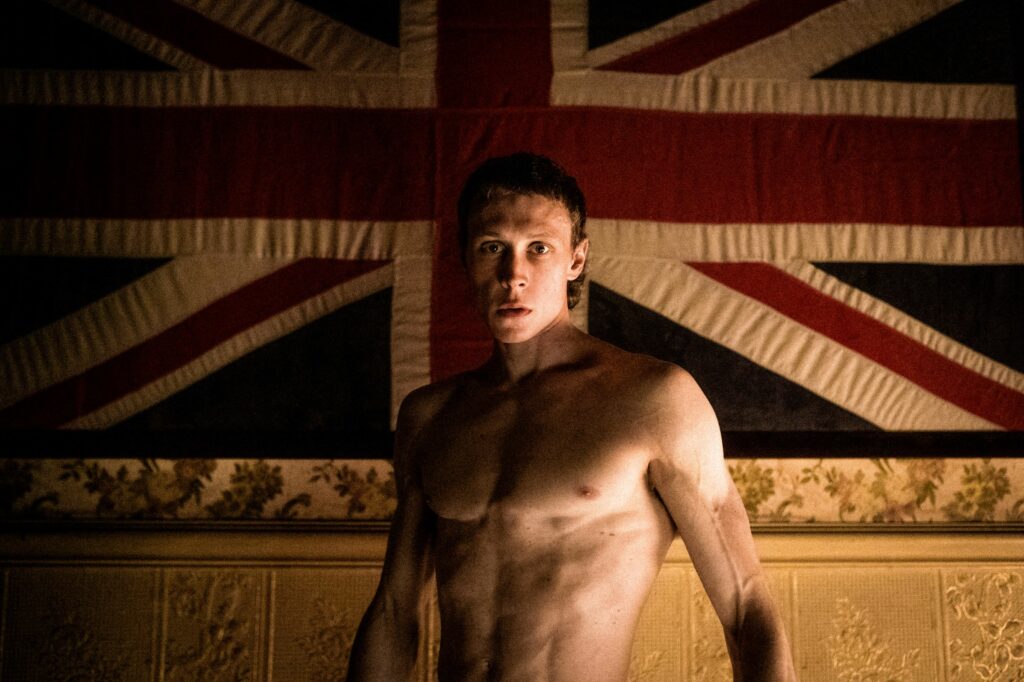
What was your inspiration there? Because I got a real sense of Apocalypse Now, that descent into madness that starts to warp the audience’s viewpoint.
Yeah, we’re definitely into it becoming more point-of-view, feeling like you’re seeing all of this through his eyes – sometimes literally – as he’s becoming part of that violence, that violence which starts to shift and change him and obscure who he thinks he is. The film becomes very visceral and locks down into this one point-of-view, which is his.
You get that foreshadowing earlier in the film where the camera shows scenes through lats of wood, in a way that mimics how he would see through his helmet visor.
It was kind of like a premonition, the idea that there’s a fate and destiny that’s already written for him. And it just shadows Ned all the way through his life until he becomes that man, until he’s viewing the world through that slit in his armour.
And I find the last scene really grabbing because little time has passed since his demise, and already those in power are rewriting his history. The film wrestles with the relationship between truth and history, and what either of those concepts mean – do you think there’s something to be said there about Australian identity wrestling with the nation’s colonial past, and the rewriting of history in that respect?
Definitely. I think that we really struggle to have an honest conversation about our past and colonialisation, and our responsibilities as white Australians in the Indigenous tragedy that occurred. And until we do, how can we start to have a wider perspective of who we are, and maybe that’s why we gravitate towards certain aspects of our history that are strange to have in focus, especially when there’s so much more that happened. That’s unbelievably significant. It’s asking why are we intrigued by these characters and why do they define us, when other things maybe should?
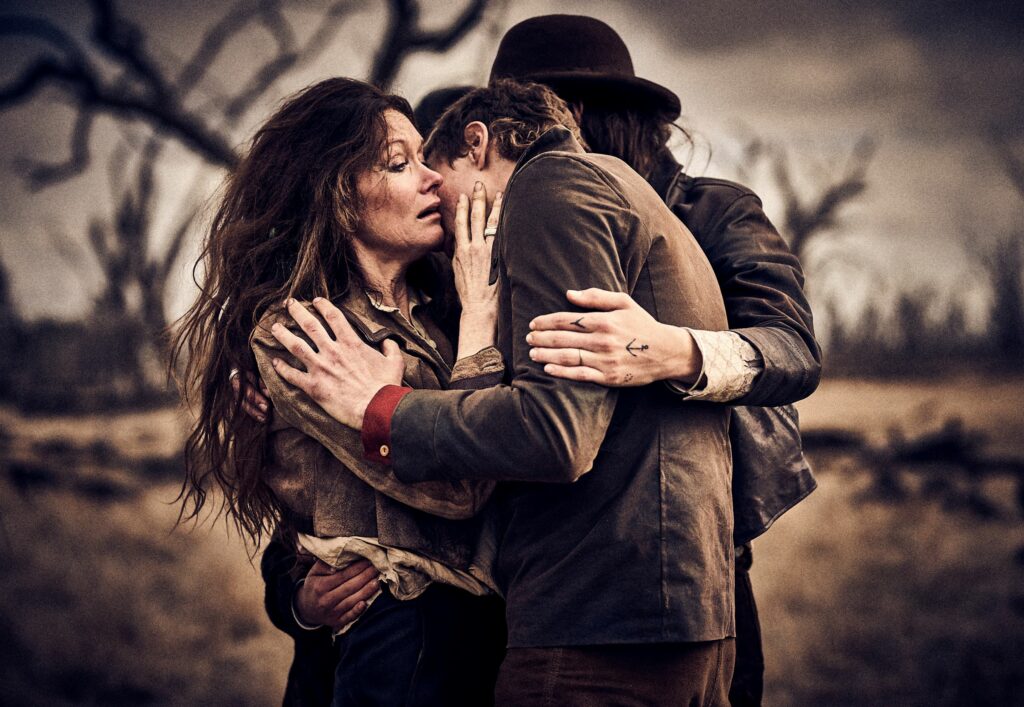
It all comes back to that same idea of history only being what you write it to be. So focusing on this outlaw white man who was looking out for the underclasses of society, that’s an interesting way of framing a history where, more often than not, we are the perpetrators. It’s always interesting when national identity creates itself around myths and stories of outlaws and rebels, as though distancing itself from the atrocities their state has committed.
Yeah, and distracts away from what the hidden wound is… or not hidden, rather an open wound! It’s like, don’t look there, let’s talk about the Robin Hood instead.
Another important thread throughout is Ned Kelly’s relationship with his mother. I don’t know how prominently that features in the book, but what was the intention in emphasising that?
It’s massive in the book, it was one of the core reasons as to why we wanted to do it. That had never been told before, the partnership between Ellen Kelly and Ned Kelly and her hold and control over him, that fear she has of him outgrowing her. That was a huge part of us wanting to do this story. It gave us a way to evolve Ned, otherwise the whole thing – and the way it’s been done before – is him robbing banks and we felt as though the focus of the story was this idea of him having to become the Iron-Clad Monitor in order to free his mother. One of my favourite lines in the film was when Ellen’s talking to Mary in the jail and says, “You know how good a mother you’ve been by the lengths your children will go to protect you.” She is a formidable and powerful figure but incredibly flawed and vulnerable as well, to whom Ned is absolutely devoted.
There’s the epilogue at the end where we’re told Ned asked that after his death, his mother be released, which of course did not happen. It’s incredibly sad because she was only in jail because of him, yet at the same time she was the one who drove him to become who he was.
And that was out of survival. At the end of the day, you might be beaten like a dog, but you’re a Kelly and you can never show them that you’re weak. The one thing they can never strip away is the fact that you’re a Kelly. And that attitude is something that Ned is very heavily seduced by, especially in the end.
It’s a way of humanising the legend.
Absolutely.
True History of the Kelly Gang is out in cinemas February 28th.
